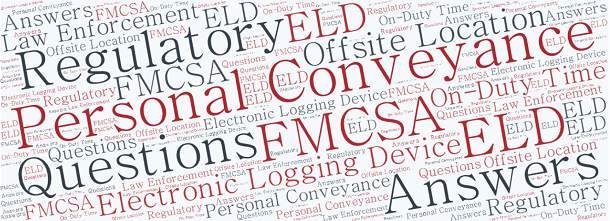Confused by personal conveyance rules under ELD? You’re not alone.
Personal conveyance has long been a source of confusion for the industry because rules dictating appropriate use are vague. Compounding matters is law enforcement’s keen focus on personal conveyance as a possible source of hours of service fraud.
Fortunately, Dave Osiecki and the team at Scopelitis Transportation Consulting have compiled a Q&A report answering common questions about when the use is allowable. They are taken directly from Federal Motor Carriers Safety Administration sources including its new FMCSA Regulatory Guidance Portal.
Among the questions and answers provided are:
Q: The guidance allows for “authorized use of a CMV to travel home after working at an offsite location.” What is meant by the term “offsite” when used in this context?
A: The term refers to a location, other than a carrier’s terminal or a shipper’s or receiver’s facility, where a driver works for a temporary period for a particular job. Specifically, this term is intended for construction and utility companies that set up base camps near a major job and operate from there for days or weeks at a time. These remote locations are considered “offsite” locations. Therefore, travel between home and that offsite location is considered commuting time, and qualifies as personal conveyance.
Q: If a driver picks up the commercial motor vehicle from a repair facility once repairs are complete, would the driver be allowed to use personal conveyance to their residence from the repair shop?
A: No, travel for repair and maintenance work is being done in the furtherance of the business and is considered on-duty time.
Q: May a driver, who drops his or her last load at a receiver’s facility, use personal conveyance to return to their normal work location (i.e. home or terminal?)
A: No. Returning home or to the terminal from a dispatched trip is a continuation of the trip, and therefore cannot be considered personal conveyance.
Want to know more? Get the full report now and make sure you’re informed on this facet of ELD enforcement.


